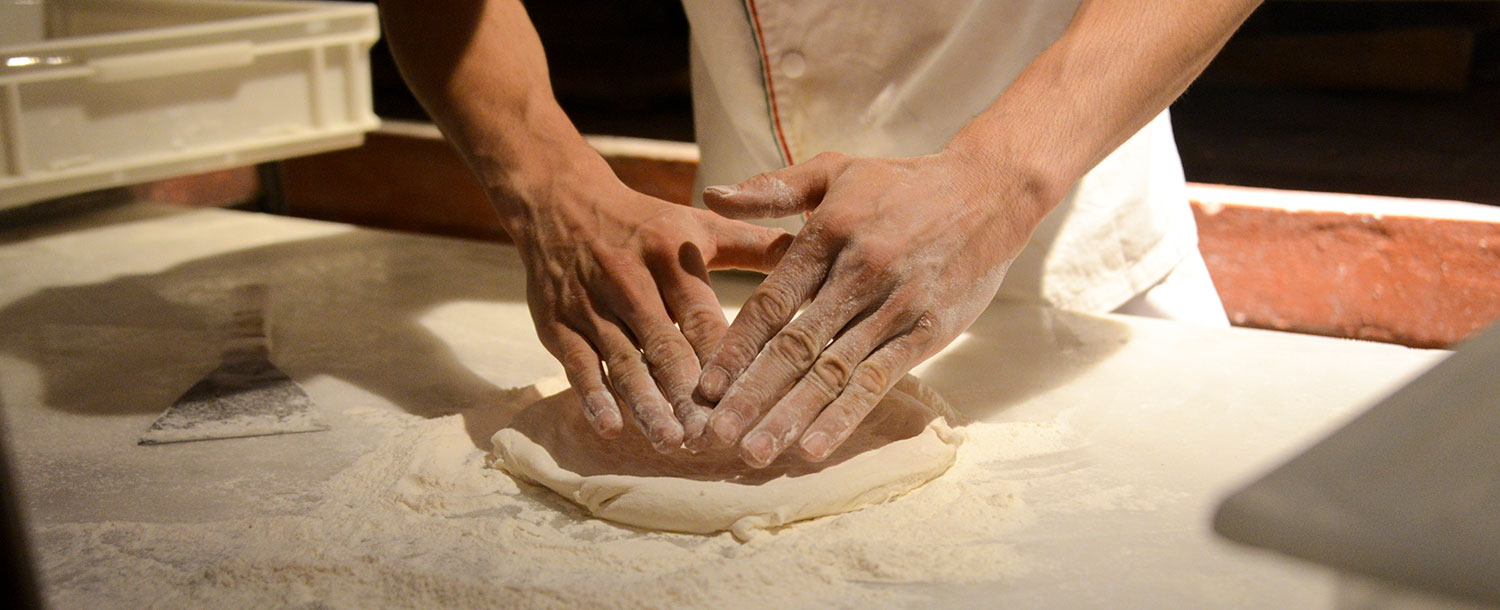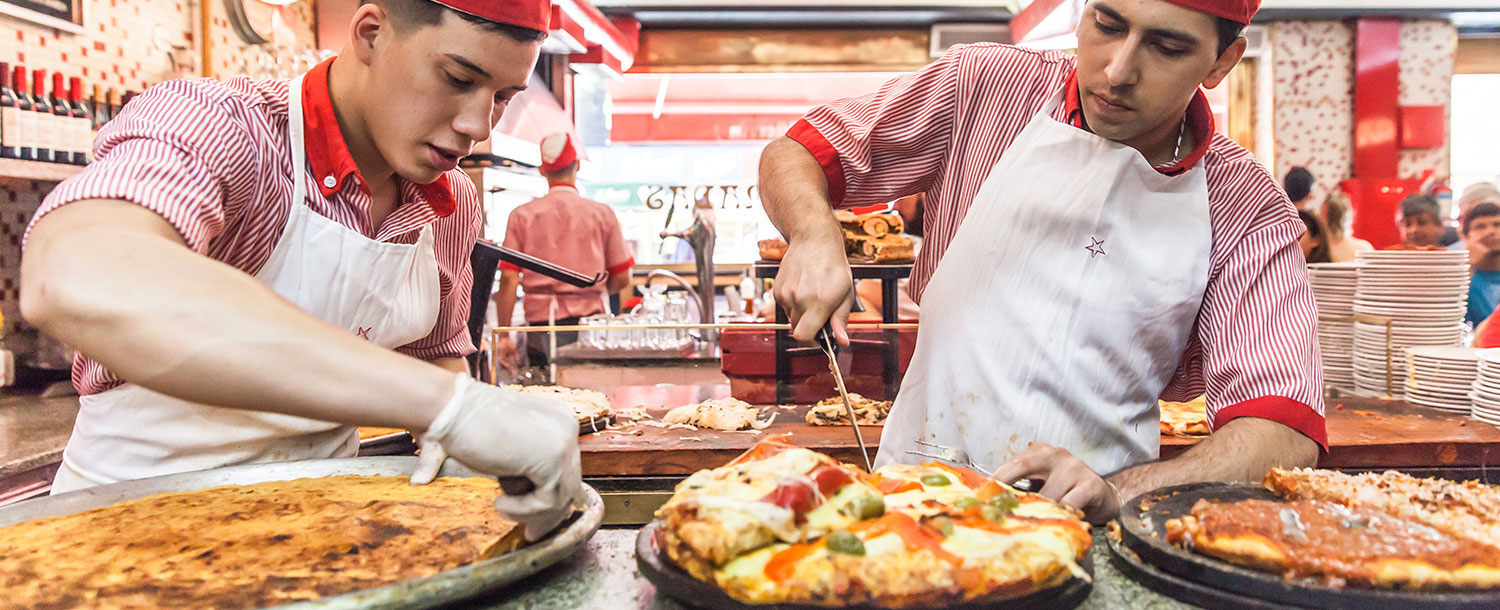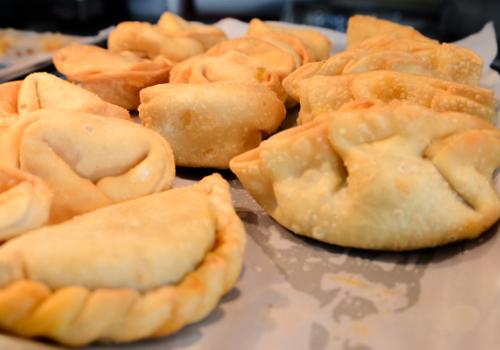Vast numbers of Italians settled in Buenos Aires during the end of the 19th and start of the 20th century, leaving an indelible influence on the city's culture and cuisine, and nowhere is that more apparent than in the incredible number and variety of pizzerias in the city.
While the original recipes came to Buenos Aires from Naples, the city's large Genoese population also had an influence in popularising the dish, particularly in La Boca neighbourhood, and while the first recipes were true to traditional Italian pizza, soon a clear "pizza porteña" began to emerge, heavily influenced by sfincione, a speciality from Palermo in Sicily. The typical pizza in Buenos Aires is prepared "al molde" - a deep-pan style that uses extra yeast to create a thicker, more spongy dough, and is topped with very generous amounts of cheese.
But today in Buenos Aires you can find pizza and pizzerías to suit all tastes, from traditional neighbourhood favourites to upmarket restaurants. Many traditional pizzerias have a space to eat standing up at the bar (popular with people ordering a quick portion of pizza on their way home from work) and a more formal restaurant seating area with table service.
Some of the most famous pizzerias are listed below, categorised according to how they prepare their pizza:
Types of pizza in Buenos Aires
- Al molde: the most popular type of pizza in Buenos Aires, with a thick, spongy dough.
- A la piedra: stone-baked pizza with a thick and crispy base, more faithful to the Italian original.
- A la parrilla: a more recent innovation, prepared on the typical Argentine barbecue grill, resulting in a thin and crispy base.
- Media masa: somewhere in the middle between the thin and crispy "a la piedra" and the deep, spongy "al molde".
Some other terms to look out for on the menu:
- Muzzarella: Buenos Aires' version of the traditional Italian margherita, with the classic topping of cheese and tomato sauce, often served with an olive on each portion.
- Fugazza: a pizza without cheese or tomato? Deriving from fugassa, the Genoese dialect word for focaccia, fugazza is a thin and crispy pizza topped with lots and lots of onion.
- Fugazzeta: just as heavy on the onions as its predecessor the fugazza, the fugazzeta is thicker, spongier, and filled with cheese.
- Pizza canchera: another pizza without cheese, the pizza canchera is topped only with tomato sauce (often containing oregano and garlic), and was apparently designed so that the pizzas could be stacked without sticking together, enabling them to be sold by vendors at football matches, hence the name "canchera," coming from the Spanish word for a sports pitch.
- Fainá: a type of flatbread made from chickpea (garbanzo) flour, originally from Genoa. Many locals in Buenos Aires buy a slice along with their pizza, and eat them together one on top of the other.



